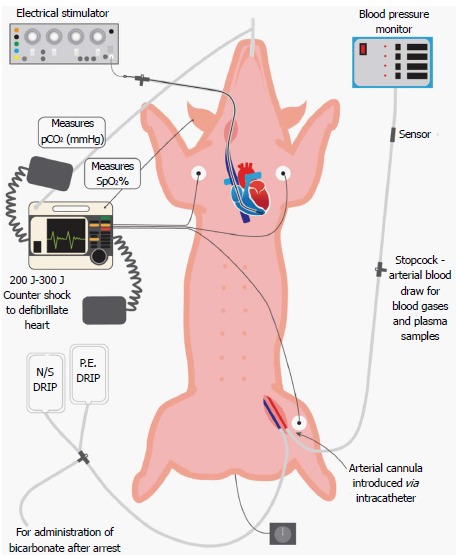Figure 1.

Porcine preparation for cardiac arrest-cardiopulmonary resuscitation studies. The pig is placed in supine recumbency and mechanically ventilated via an endotracheal tube, through which isoflurane anesthesia is administered. Hemodynamic function is monitored by a femoral arterial catheter connected to a pressure transducer, and electrocardiographic activity is monitored by standard limb lead II electrocardiogram. Cardiac arrest is induced by a train of electrical impulses conducted by an intrajugular pacing wire from an electrical stimulator to the right ventricular endocardium. Body temperature is measured with a rectal probe, and end-tidal pCO2 by a sensor placed in the endotracheal tube. Defibrillatory countershocks (200-300 J) are administered with external paddles. Intravenous treatments include normal saline (N/S), phenylephrine (PE), sodium bicarbonate and experimental resuscitative fluids. spO2: Percentage oxyhemoglobin saturation.
